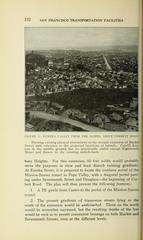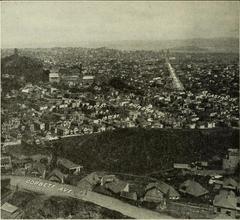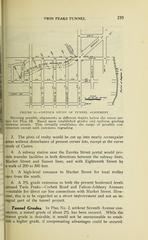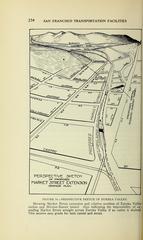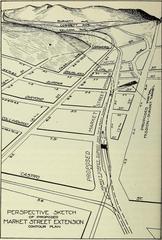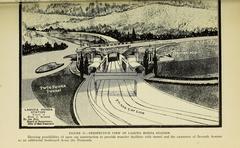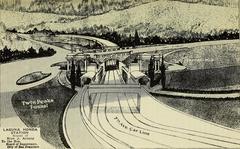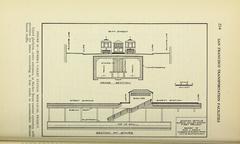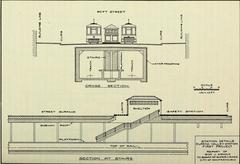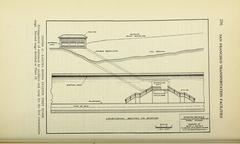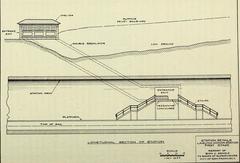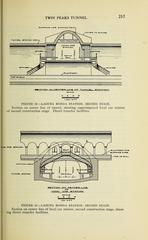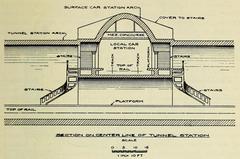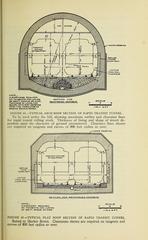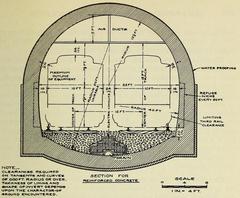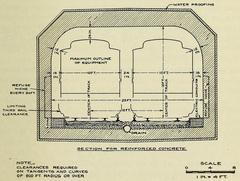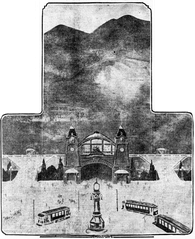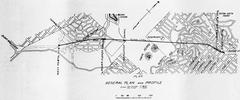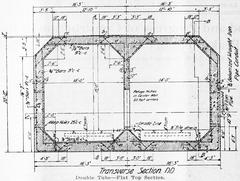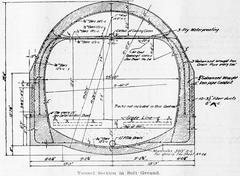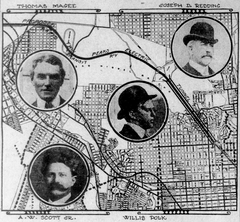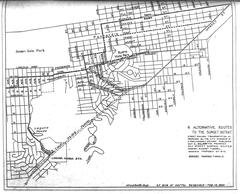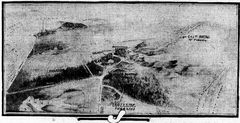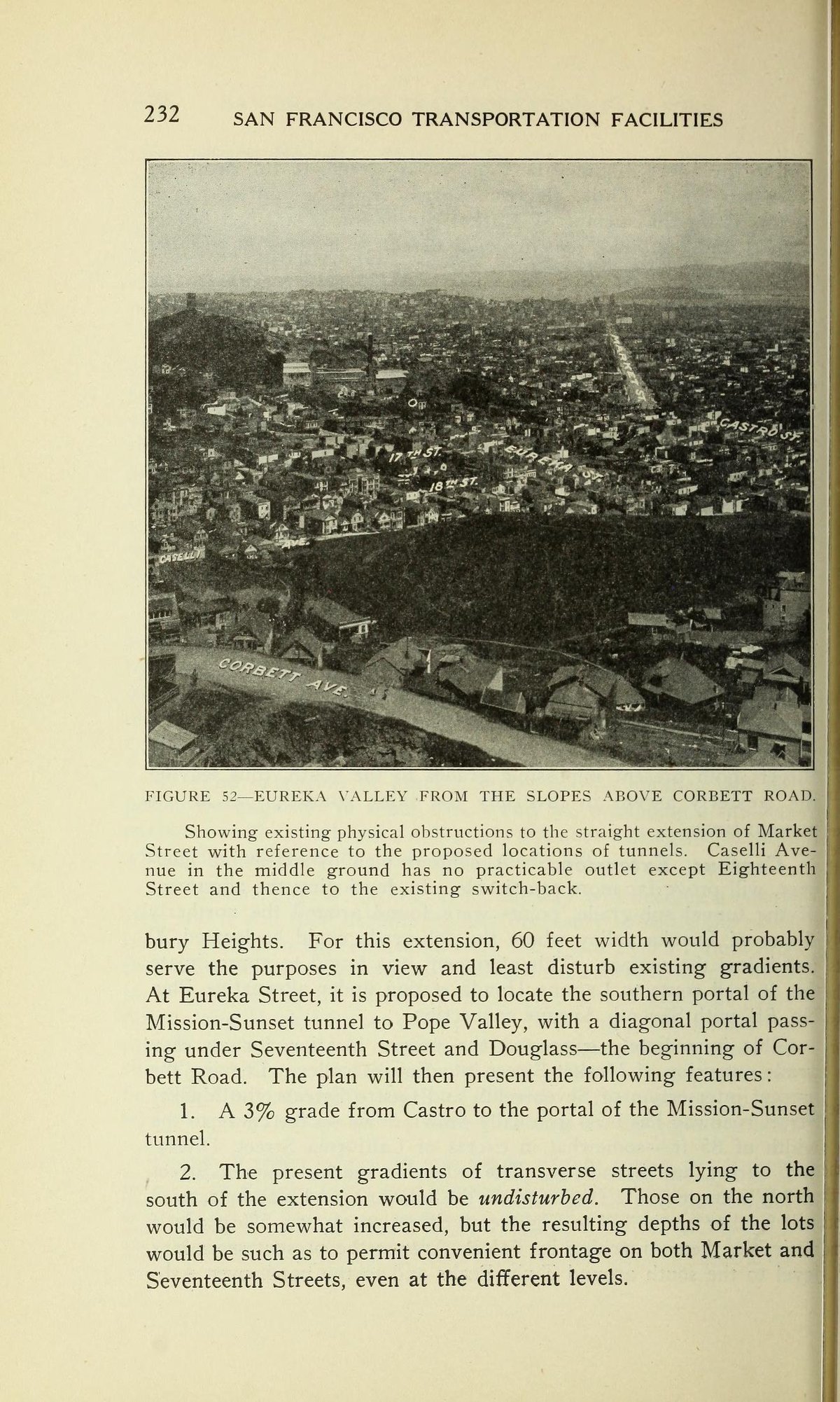
Twin Peaks Tunnel San Francisco: Visiting Hours, Tickets, and Historical Significance
Date: 14/06/2025
Introduction
The Twin Peaks Tunnel is an engineering marvel and a cornerstone of San Francisco’s urban development. Conceived in the early 20th century, it overcame the natural barrier of the Twin Peaks hills, connecting downtown San Francisco to its western neighborhoods. Since opening in 1918, the tunnel has transformed the city’s landscape, spurred economic growth, and stands as a symbol of resilience and modernization following the 1906 earthquake (SFMTA; FoundSF).
Today, the tunnel remains vital for the Muni Metro system, serving over 80,000 passengers daily on the K Ingleside, M Ocean View, and L Taraval lines. While direct access inside the tunnel is restricted to operational transit, visitors can explore its historic portals and the vibrant neighborhoods nearby. This guide offers a comprehensive overview of the tunnel’s history, engineering significance, practical visiting tips, accessibility, and nearby attractions.
Table of Contents
- Early Urban Challenges and the Need for the Tunnel
- Planning and Construction
- Dedication and Opening Ceremonies
- Impact on Urban Development
- Technological and Engineering Significance
- Evolution and Modernization
- Visiting Information: Hours and Tickets
- Guided Tours and Special Events
- Nearby Attractions and Travel Tips
- Accessibility Information
- Cultural and Historical Legacy
- Frequently Asked Questions (FAQ)
- Plan Your Visit
- References
1. Early Urban Challenges and the Need for the Tunnel
In the early 1900s, San Francisco’s west side was isolated due to the imposing Twin Peaks hills. Existing streetcar lines offered indirect, slow service, leaving nearly 4,000 acres undeveloped (SFMTA). The city’s rapid growth after the 1906 earthquake and a pressing need for affordable housing fueled public debate for a direct transit solution. By 1914, plans and funding for a tunnel connecting downtown to the western districts were finalized (FoundSF).
2. Planning and Construction
The Twin Peaks Tunnel was an ambitious project for its era, designed to be the world’s longest municipal tunnel upon completion. Spanning approximately two miles (3.2 km), it connected the Castro District at Market Street to the newly established West Portal neighborhood.
Construction began in 1914 under City Engineer M.M. O’Shaughnessy, utilizing steam shovels, manual labor, and dynamite. The central section beneath the hills was excavated by hand, while a rail conveyor system removed debris, particularly near Diamond Street. The construction process was meticulously documented, including in a film by the Pathescope company, which also chronicled the development of nearby neighborhoods (FoundSF).
3. Dedication and Opening Ceremonies
By mid-1917, the tunnel was completed. On July 14, 1917, Mayor James Rolph and City Engineer O’Shaughnessy marked the ceremonial completion at West Portal Avenue and Ulloa Street (SFMTA). The first streetcar journey occurred in early 1918, with crowds celebrating the city’s commitment to modern transit and urban growth.
4. Impact on Urban Development
The tunnel immediately catalyzed the transformation of neighborhoods like West Portal, Forest Hill, Stern Grove, and St. Francis Wood, which evolved from sparsely populated areas into thriving communities. The direct transit connection spurred residential and commercial development, profoundly shaping the city’s demographic and economic patterns (SFMTA; FoundSF).
5. Technological and Engineering Significance
Upon completion, the Twin Peaks Tunnel was a municipal engineering milestone: nearly 12,000 feet long, 25 feet in diameter, and designed for two tracks (SFMTA PDF). The Beaux-Arts West Portal station became an architectural landmark. The tunnel’s construction set new standards for urban transit projects and inspired future infrastructure developments (FoundSF).
6. Evolution and Modernization
The tunnel’s role evolved with the city’s transit needs. In the 1970s, it was integrated with the Market Street Subway, and both portals were reconstructed. Today, the tunnel accommodates the K, L, and M Muni Metro lines, serving over 80,000 daily riders (SFMTA). Ongoing upgrades, including seismic reinforcements and track replacements, ensure its reliability and safety (SFMTA Travel Updates).
7. Visiting Information: Hours and Tickets
- Operating Hours: The tunnel operates daily as part of the Muni Metro system, with trains running from approximately 5:00 a.m. to midnight (SFMTA Official Site).
- Tickets and Fares: Standard Muni fares apply (as of 2024, $3.00 for a single adult ride), with passes available for frequent riders.
- Access: Experience the tunnel by riding the K, L, or M lines. Tickets can be purchased at station kiosks, via the MuniMobile app, or with Clipper cards.
Please note: The tunnel itself is not open for pedestrian tours due to operational and safety reasons.
8. Guided Tours and Special Events
While tours inside the tunnel are not available, the West Portal neighborhood hosts community and historical events that highlight the tunnel’s significance. The San Francisco Transit Museum and local history groups occasionally offer programs focusing on the city’s transit heritage, including the Twin Peaks Tunnel.
9. Nearby Attractions and Travel Tips
- West Portal Neighborhood: Explore shops, cafes, and the historic West Portal Station.
- Twin Peaks Viewpoint: Offers panoramic city views; accessible by car, bus, or a moderate uphill walk.
- Forest Hill Station: Retains early 20th-century architectural features.
- Stern Grove: A scenic park known for free summer concerts.
Travel Tips:
- Use public transit to avoid parking challenges.
- Mid-morning or early afternoon visits are less crowded.
- The West Portal entrance is a favorite spot for photography enthusiasts.
10. Accessibility Information
Stations at West Portal and Castro are fully accessible, with elevators, ramps, and tactile paving. Muni Metro vehicles offer low-floor boarding for wheelchair and stroller access. For detailed accessibility guidance, visit the SFMTA Accessibility Guide.
11. Cultural and Historical Legacy
The tunnel’s story is preserved through archival films, photographs, and museum exhibits, with centennial celebrations marking its enduring place in San Francisco history. The original construction film is housed at the Niles Essanay Silent Film Museum, supported by preservation efforts (FoundSF). Community events continue to honor its legacy (SFMTA).
12. Frequently Asked Questions (FAQ)
Q: What are the Twin Peaks Tunnel’s operating hours?
A: The tunnel is open for transit service from about 5:00 a.m. to midnight daily.
Q: Can I walk through the tunnel or take a guided tour inside?
A: No, the tunnel is an active transit corridor and not open to pedestrians or tours.
Q: How do I visit or experience the tunnel?
A: Ride the Muni Metro K, L, or M lines through the tunnel; visit the West Portal and Castro neighborhoods for historic views and nearby attractions.
Q: Is the tunnel accessible for people with disabilities?
A: Yes, stations are fully accessible, and Muni Metro trains accommodate wheelchairs and strollers.
Q: Are there any special events related to the tunnel?
A: Occasionally, community and SFMTA events highlight the tunnel’s history; check the SFMTA website and local listings for updates.
13. Plan Your Visit
- Download the SFMTA app for real-time transit updates.
- For route planning and visitor tips, visit the SFMTA Twin Peaks Tunnel project page.
- Explore nearby viewpoints and neighborhoods, and consider joining local historical walks for a broader perspective on San Francisco’s transit legacy.

Image Alt Text: Twin Peaks Tunnel West Portal façade, a Beaux-Arts architectural landmark in San Francisco.
14. References
- Twin Peaks Tunnel: History, Visiting Hours, and Travel Tips for San Francisco’s Iconic Transit Landmark, SFMTA
- Twin Peaks Tunnel, FoundSF
- Exploring the Twin Peaks Tunnel: History, Transit Significance, and Visitor Guide in San Francisco, Wikipedia
- Twin Peaks Tunnel Improvements, SFMTA
- Twin Peaks Tunnel: Visiting Hours, Tickets, and Travel Tips for San Francisco’s Historic Transit Landmark, SFMTA
